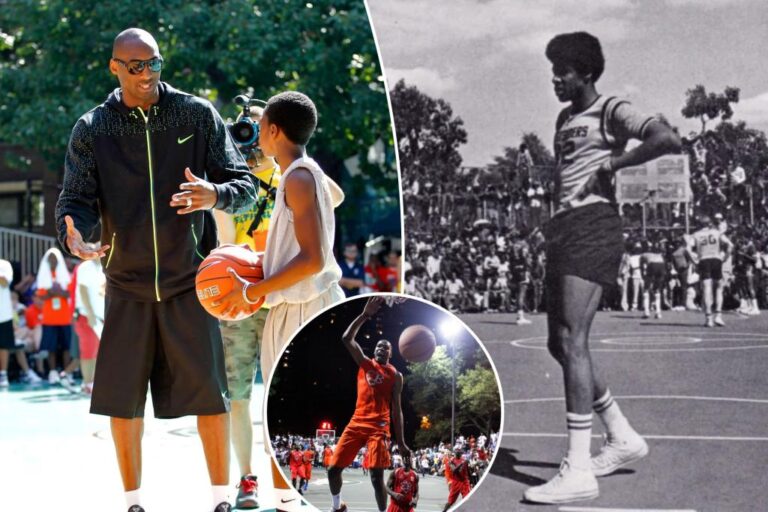The Legacy of Rucker Park: A Streetball Icon
Marvin “Hammer” Stevens stands under a tent at Rucker Park, observing the game with a discerning eye. The atmosphere, once electric with the spirit of iconic streetball matchups, feels different now. "This is nothing compared to our games. No comparison," he reflects, a sentiment shared by many who remember the park’s storied past.
Rucker Park: A Historic Venue
Located at 155th Street and Frederick Douglass Boulevard, Rucker Park is not just a basketball court; it’s a cultural landmark that has shaped the game we see today. While contemporary events focus on summer youth leagues and local tournaments, Rucker once thrived as the epicenter of basketball talent. During its golden era, it was a stage for the likes of Julius “Dr. J” Erving and Kareem Abdul-Jabbar, redefining the dynamics of streetball.
Key Players Who Graced Rucker’s Courts
- Kareem Abdul-Jabbar: Known as Lew Alcindor when he played at Rucker in the 1960s.
- Wilt Chamberlain: A frequent visitor to the park, contributing to its rich history.
- Julius "Dr. J" Erving: Helped popularize the athletic and entertaining style of play that influenced the NBA.
- Nate “Tiny” Archibald: A playground legend who left his mark on the game.
The Dr. J Era
When Dr. J played his first game at Rucker in 1971, the atmosphere was electric. College regulations had limited his ability to dunk, but Rucker offered a fresh canvas for his athleticism. Fans clamored for action, booing missed dunks just as much as they cheered for them. Erving recalls, "It was like the chains coming off," a liberating experience compared to his more structured collegiate days.
The Impact on His Career
Erving attributed much of his development to his time at Rucker. The fast-paced play style, aided by teammates like point guard Roland “Fatty” Taylor, allowed it to flourish. This unique environment propelled him into the American Basketball Association (ABA) and later into the NBA, where he became a franchise player for the Philadelphia 76ers.
Cultural Significance of Rucker Park
Rucker Park has not only been a platform for basketball but also a melting pot of culture.
- Community Engagement: Various youth programs aim to uplift local talent.
- Media Attention: Sports journalist Peter Vecsey was instrumental in popularizing Rucker by forming a team in 1971, securing sponsorships, and promoting the league.
The Atmosphere at Rucker
Erving discussed the intimate setting, noting that the crowd’s proximity transformed the experience. He observed, "The court was reduced in size due to people being so close to you, which amplified the energy."
Challenges Facing Modern Rucker
Today, replicating the Rucker experience is almost impossible.
- Injury Concerns: Many NBA stars like Kobe Bryant and Kevin Durant have made brief appearances but avoid regular play due to injury risks.
- Changes in the Environment: The towering trees that once allowed fans to watch from above now block many views, altering the park’s atmosphere.
The Spirit Lives On
Despite the challenges, Rucker Park’s spirit remains vibrant. On a recent summer evening, a DJ spun remixes while an emcee, Larry King Agee, engaged the crowd with humor and commentary. His quips, like “Shoutout to all the beautiful people here tonight, and if you’re ugly, we appreciate you too,” created laughter, drawing in fans like Maurice Portis, a personal trainer.
Modern-Day Experience
While Portis acknowledges that Rucker has changed, wearing the uniform still carries a sense of pride. "It’s probably not like it used to be, but when you come in here and you put on that uniform, it’s something to be proud of," he affirms.
Conclusion
Rucker Park holds an irreplaceable position in the lore of basketball. From Dr. J’s historical leap to today’s vibrant streetball culture, it embodies the evolution of the game. For fans, players, and historians, it serves as a reminder of where basketball has come from and where it might go next.
For more on basketball history and cultural significance, explore NBAE, SB Nation, and Bleacher Report.


